“To the town of Agua Fria rode a stranger one fine day
Hardly spoke to folks around him, didn’t have too much to say
No one dared to ask his business, no one dared to make a slip
For the stranger there among them had a big iron on his hip
(Big iron on his hip)” – Big Iron (Martin Robinson) © Warner Chappell Music
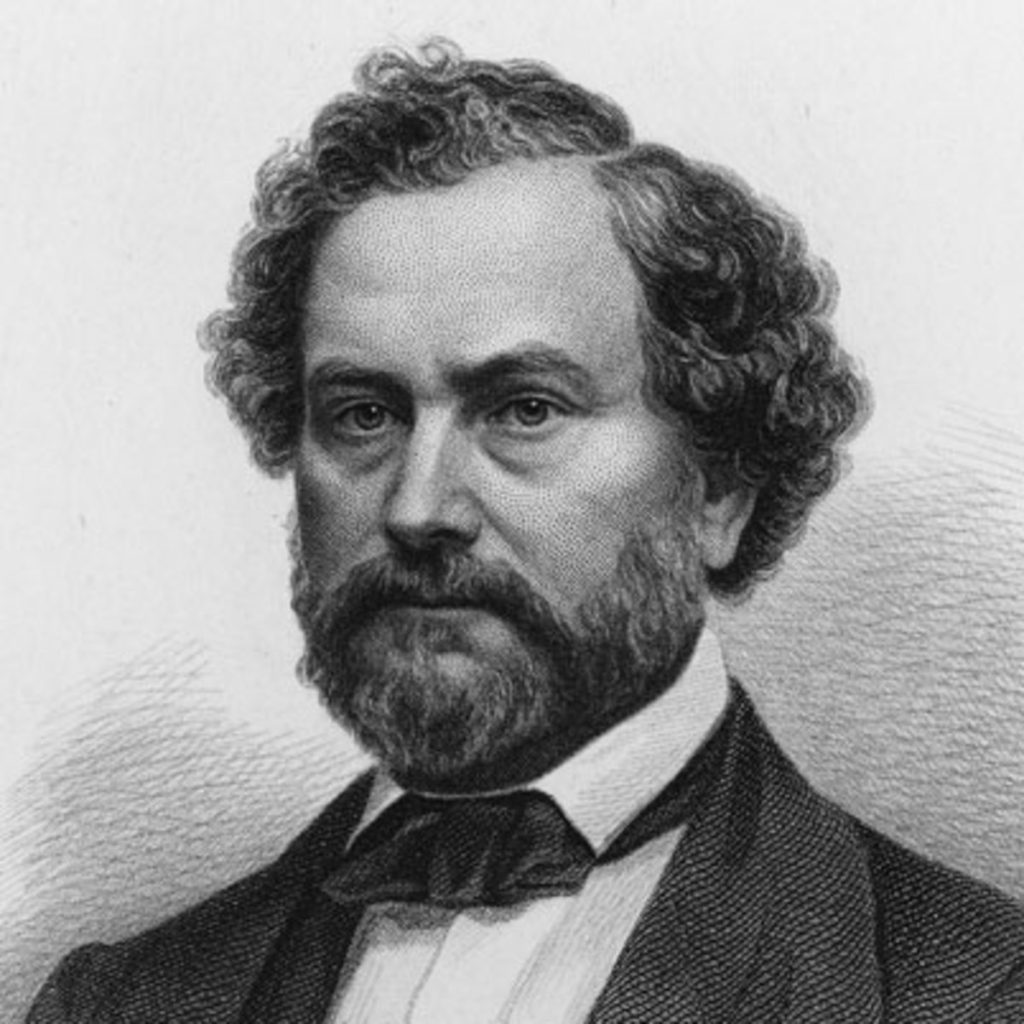
“God made man, Samuel Colt made them equal.”
Samuel Colt was born in Hartford, Connecticut, in 1814. One of his earliest possessions was a flintlock pistol that had belonged to his maternal grandfather, Major John Caldwell, who had been an officer in the Continental Army.
Showing a keen interest in knowing how things worked, young Samuel would often disassemble objects, including his father’s firearms, to satisfy his curiosity.
At 11 years of age, Colt was indentured to a farmer in Glastonbury, CT. There he did chores and attended school. Rather than studying the Bible, he chose to read a scientific encyclopedia called the Compendium of Knowledge. He was fascinated by the stories it contained of inventors whose accomplishments had once been supposed impossible. He was determined to be one of those known for achieving the unachievable.
At one point, Colt heard soldiers commenting that a gun that could shoot four or five times before reloading was something that was surely unattainable. He determined that he would be the mastermind behind that “impossible gun”.
“It was early in the morning when he rode into the town
He came riding from the south side, slowly lookin’ all around
‘He’s an outlaw loose and running’, came the whisper from each lip
And he’s here to do some business with the big iron on his hip
(Big iron on his hip) – Big Iron (Robinson)

Gunpowder, also known as black powder, was invented in 9th-century China. According to a Taoist text from that era, it was likely an accident by Chinese alchemists that led to the discovery. Formulated from sulfur, charcoal, and potassium nitrate (saltpeter), the compound was a likely byproduct of experiments seeking to create the elixir of life. This origin is manifest in gunpowder’s Chinese name huoyao, which means “fire medicine”.

By 904, China had implemented gunpowder for military purposes, but it was not until 1288 that the first handheld firearm was developed. Known as the Heilongjiang hand cannon, the bronze barreled weapon had a length of 13.4” (without a handle), and a weight of 7.8 pounds; the interior diameter at the end of the barrel was 1”. The powder chamber had a small touch hole, for inserting the fuse used to ignite the gunpowder.
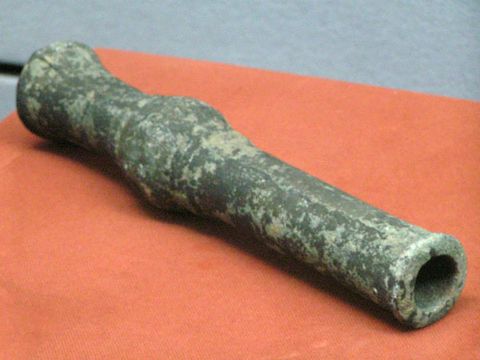
“In this town, there lived an outlaw by the name of Texas Red
Many men had tried to take him and that many men were dead
He was vicious and a killer, though a youth of twenty-four
And the notches on his pistol numbered one an nineteen more
(One and nineteen more)” – Big Iron (Robinson)
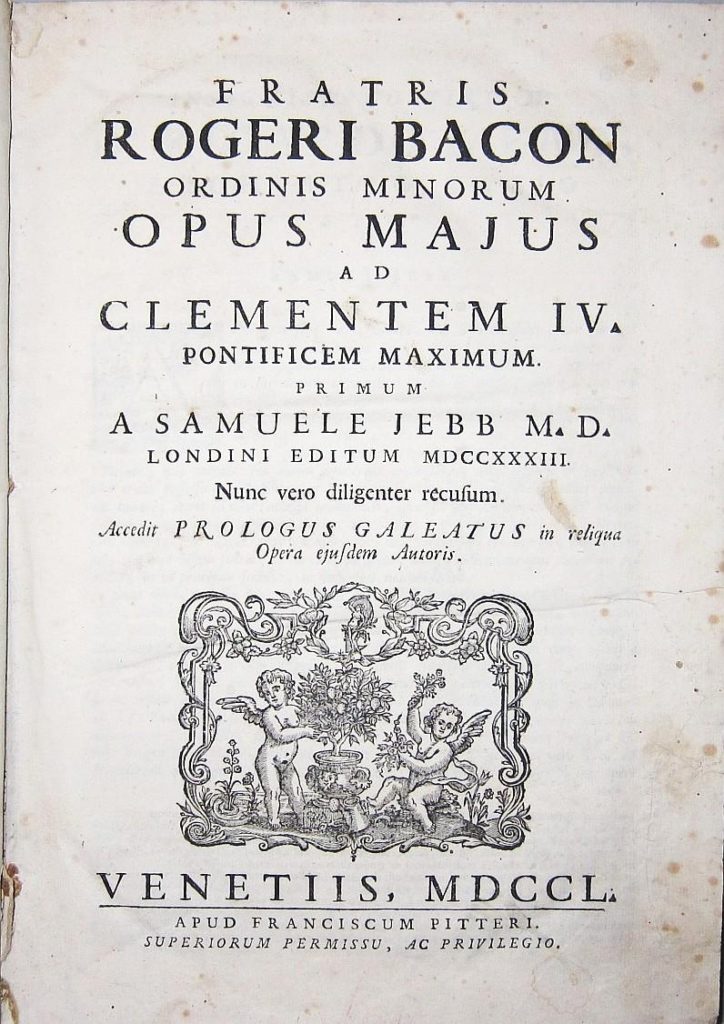
One of the earliest European references to gunpowder is found in the writings of English philosopher Roger Bacon. From Opus Maius, dated 1267:
“From the violence of that salt called saltpeter [together with sulfur and willow charcoal, combined into a powder] so horrible a sound is made by the bursting of a thing so small, no more than a bit of parchment [containing it], that we find [the ear assaulted by a noise] exceeding the roar of strong thunder, and a flash brighter than the most brilliant lightning.”
Although Bacon’s passage apparently refers to a firecracker, weapons utilizing the explosive force of black powder would soon follow. However, it was not until the mid-15th century that the first handheld firearms would appear in Europe.
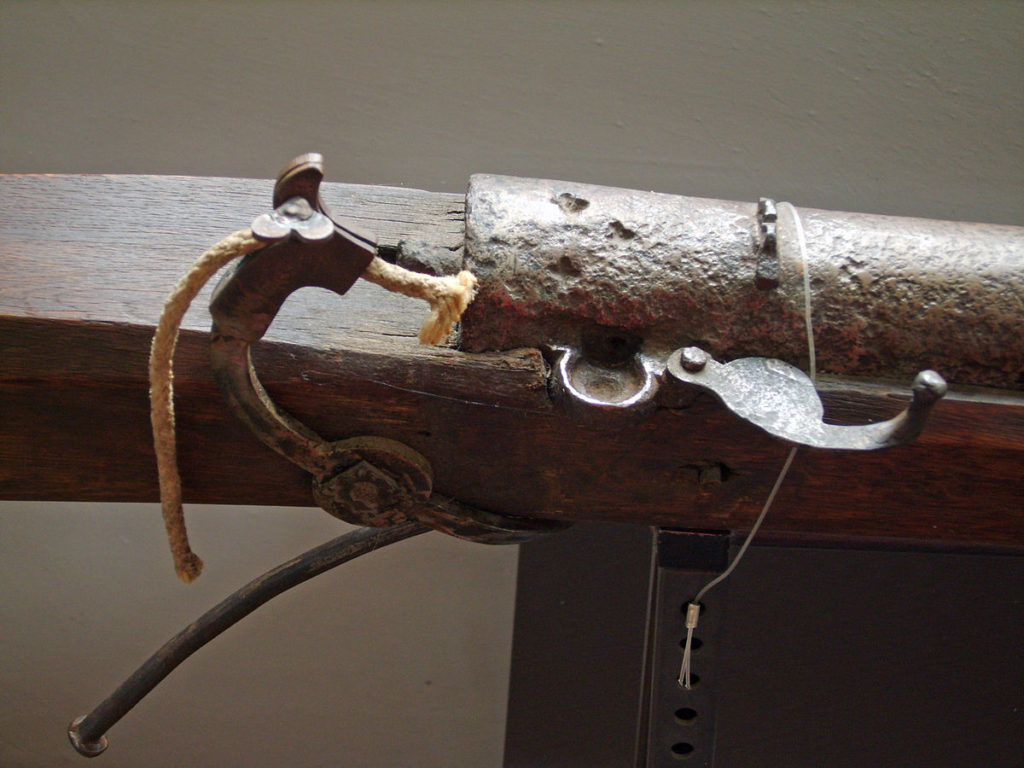
The matchlock was the first mechanism invented to free the user of a handheld firearm from having to light the weapon’s powder charge by hand. Matchlock guns were the first to use a trigger as the means of firing. Subsequent improvements on the matchlock’s design would lead to wheellock, flintlock and caplock pistols; with each modification shortening the period between the pulling of the trigger and the projectile leaving the gun’s muzzle.
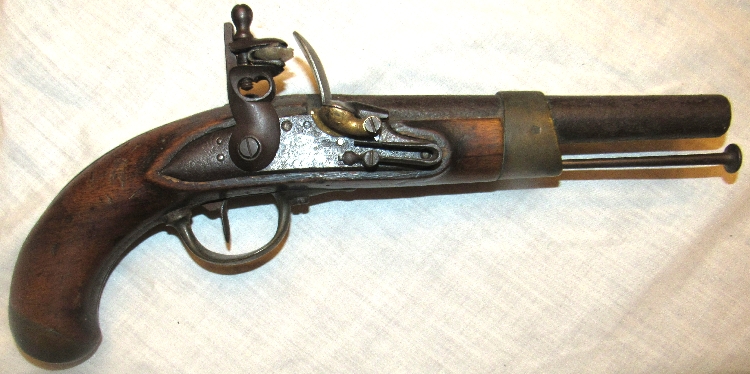
flintlock 
caplock
“Now the stranger started talking, made it plain to folks around
Was an Arizona ranger, wouldn’t be too long in town
He came here to take an outlaw back alive or maybe dead
And he said it didn’t matter, he was after Texas Red
(After Texas Red)” – Big Iron (Robinson)
At the age of sixteen, Samuel Colt was enrolled in boarding school, where he was to study navigation. He was later expelled from school for engaging in pyrotechnics that caused a fire. He was then sent to sea by his father to study navigation first hand, embarking on a nearly yearlong voyage to Calcutta in 1830.
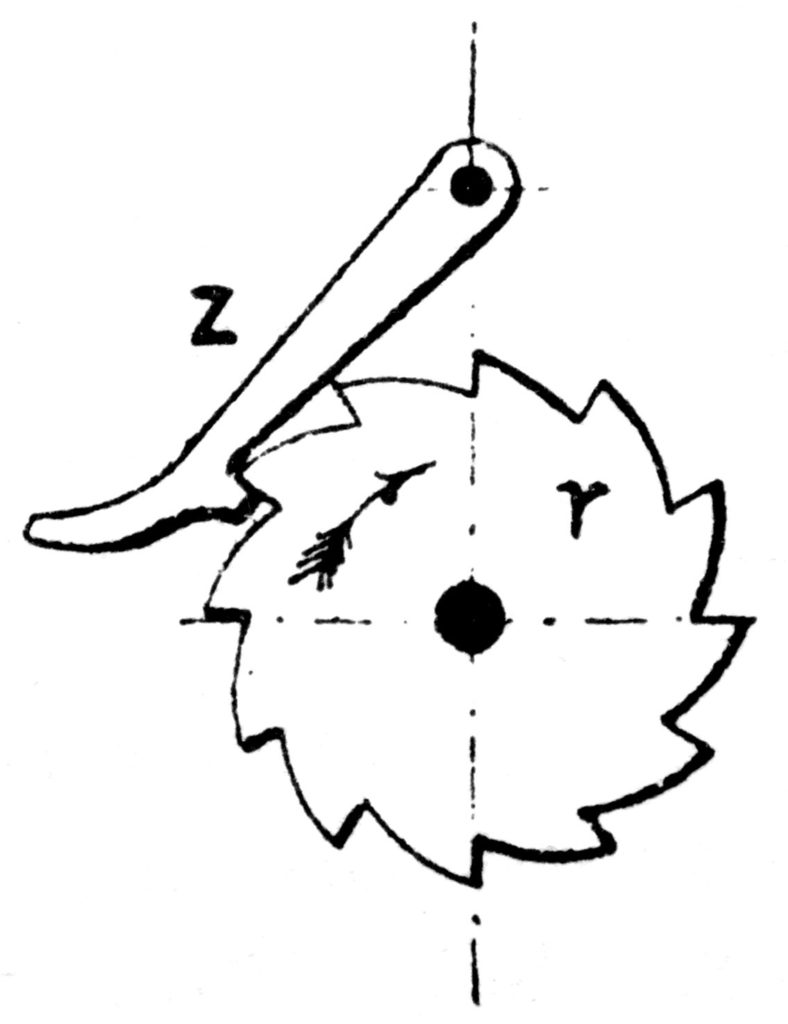
While at sea aboard the brig Corvo, Colt derived an idea from the operation of the ship’s capstan, which incorporated a ratchet and pawl mechanism to alternately spin or lock the wheel in a fixed position through the use of a clutch. Out of wood he carved a prototype revolver that allowed the user to rotate the cylinder by cocking the hammer, with an attached pawl turning the cylinder, which is then locked firmly in alignment by a bolt. This design was a vast improvement over existing “pepperbox” revolver models that required the user to turn the cylinder by hand and hope for proper barrel alignment.

“Wasn’t long before the story was relayed to Texas Red
But the outlaw didn’t worry, men that tried before were dead
Twenty men had tried to take him, twenty men had made a slip
Twenty one would be the ranger with the big iron on his hip
(Big iron on his hip)” – Big Iron (Robinson)
Colt returned to the United States in 1832 and was able to convince his father to help finance early development stages for his firearm designs. When his father refused a further influx of cash, Colt looked for other sources to fund his endeavors. Having learned about nitrous oxide from a chemist at his father’s textile plant, he took to the road and earned a living performing laughing gas demonstrations across the U.S. and Canada, calling himself “the Celebrated Dr. Coult of New-York, London and Calcutta”.

With savings from his exploits as a “medicine man”, and enlisting the expertise of skilled gunsmiths, Colt was able to refine his design for a pistol with a fixed barrel and rotating cylinder, as opposed to his original idea for a gun with multiple revolving barrels.
On the advice of a family friend he first obtained a patent for his “revolving gun” in the United Kingdom in 1835, and was then awarded a patent from the United States the following year.

“The morning passed so quickly, it was time for them to meet
It was twenty past eleven when they walked out in the street
Folks were watching from their windows, every-body held their breath
They knew this handsome ranger was about to meet his death
(About to meet his death)” – Big Iron (Robinson)
In spite of the innovations that Samuel Colt brought to the handgun market, his first manufacturing enterprise, Patent Arms Manufacturing Company, was a failure. One problem for Colt was the Militia Act of 1808 which stated that any arms purchased by a state militia had to be in current service in the United States Military. Though he had demonstrated his gun for President Andrew Jackson, and the weapon had received the president’s approval, he was unable to convince the U.S. military to purchase his weapons.
Lacking the sales necessary to support growth, the company’s shareholders took control and in 1842 the company was shut down with its inventory auctioned off. Fortunately for Colt, he had had the foresight to register his patents in his name and he retained all the rights to his gun designs.
“There was forty feet between them when they stopped to make their play
And the swiftness of the ranger is still talked about today
Texas Red had not cleared leather ‘fore a bullet fairly ripped
And the rangers aim was deadly with the big iron on his hip
(Big iron on his hip) – Big Iron (Robinson)
Following the liquidation of his arms company, Samuel Colt continued to invent and innovate, selling underwater electrical detonators and waterproof cable of his own design. For a period he teamed with Samuel Morse to work on an underwater telegraph cable. He also continued to revise and improve his revolver, including adopting a metallic cartridge which could be rear-loaded into the gun’s cylinder chambers much more quickly than using paper wrapped powder and ball cartridges which necessitated front loading.

In 1847, Colt met with Captain Samuel Walker of the Texas Rangers. Walker had acquired some early models of Colt’s revolver and had seen firsthand how effective the guns could be in confrontations with the Comanches in Texas. Walker wished to place an order for 1,000 guns but specified some changes he would like to see in the weapon’s design. He wanted the guns to allow for 6 shots, rather than 5; he wanted the guns to be easier to reload, and he included the stipulation that it possess enough power to kill either a human or a horse with a single shot.
With this large order, Colt was able to establish a new firearms company, and produce the Colt Walker, which incorporated his prototype and Captain Walker’s suggested modifications. The company soon received an order for an additional thousand guns, and with revenue from the sales and a loan from his cousin, Colt’s Patent Fire-Arms Manufacturing Company built their own factory overlooking the Connecticut River at Hartford.

“It was over in a moment and the folks had gathered round
There before them lay the body of the outlaw on the ground
Oh, he might have gone on living, but he made one fatal slip
When he tried to match the ranger with the big iron on his hip
Big iron on his hip” – Big Iron (Robinson)
Samuel Colt died at his Connecticut mansion, Armsmear, on January 10, 1862, at the age of 47. Colt willed his estate to his wife and three-year-old son. At the time of his death, the estate was valued at $15,000,000 (equivalent to $384m in 2019). Colt’s company is reported to have manufactured more than 400,000 firearms during his lifetime, and still in business today, has produced more than 30 million pistols, revolvers, and rifles.
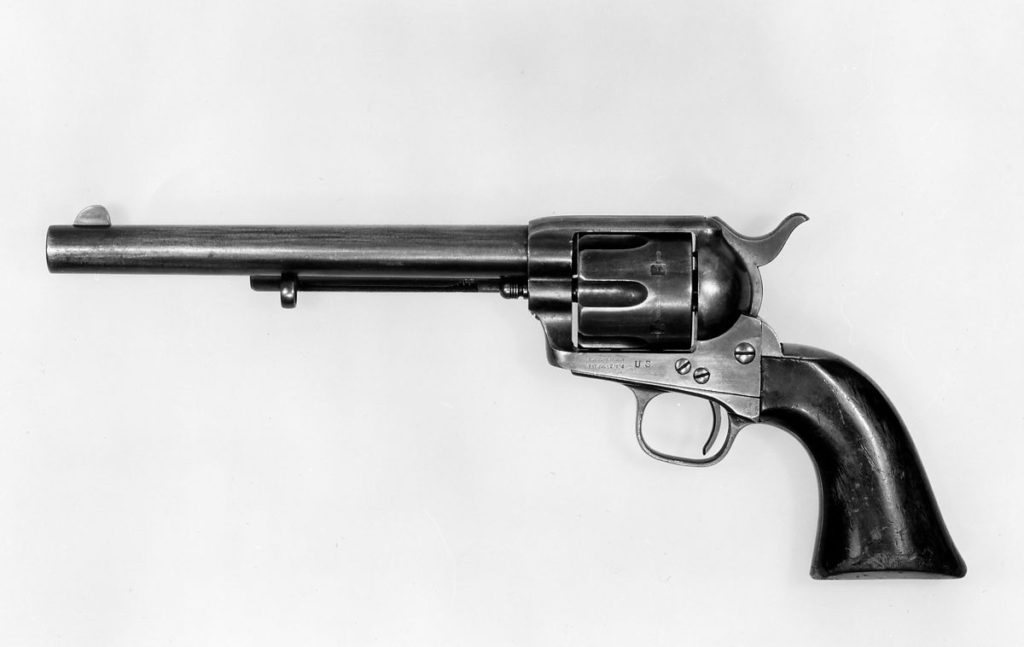
In 1872 the company began manufacture of the Colt Single Action Army handgun, also known as the Colt .45 or the Peacemaker, the standard service revolver of the U.S. military between 1873 and 1892. The ironically named Peacemaker has been called, “The Gun That Won the West”, and quite possibly is the “Big Iron” referred to in Marty Robbins’ song of the same name.
In his 1966 novel, When Eight Bells Toll, Scottish author Alistair MacLean writes:
“The Peacemaker Colt has now been in production, without change in design, for a century. Buy one today and it would be indistinguishable from the one Wyatt Earp wore when he was the Marshal of Dodge City. It is the oldest hand-gun in the world, without question the most famous and, if efficiency in its designated task of maiming and killing be taken as criterion of its worth, then it is also probably the best hand-gun ever made.”
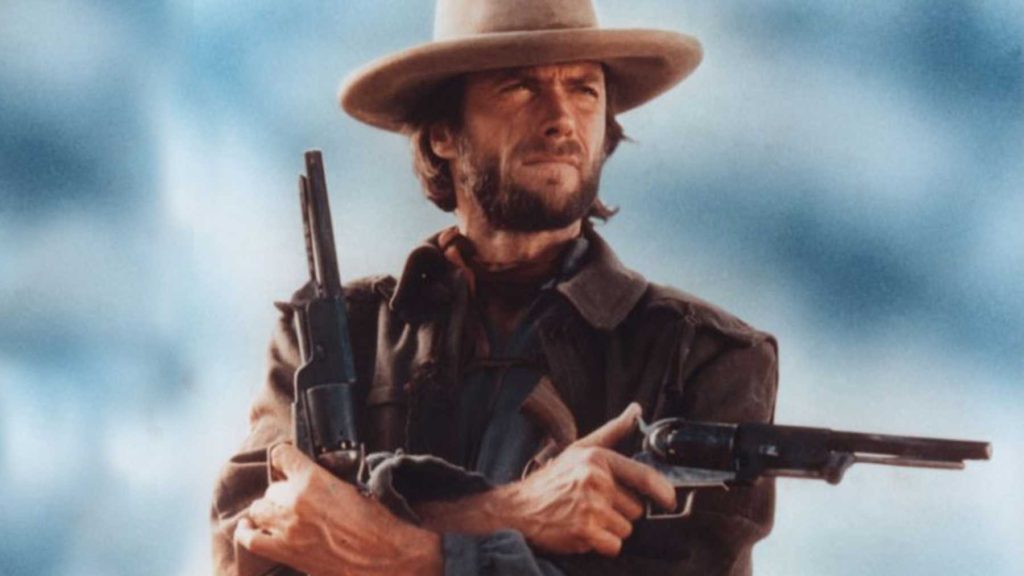
“Big iron, big iron
When he tried to match the ranger
With the big iron on his hip
(The Big Iron on his hip)” – Big Iron (Martin Robinson) © Warner Chappell Music

Sources:
https://en.wikipedia.org/wiki/Revolver
https://en.wikipedia.org/wiki/Samuel_Colt
https://en.wikipedia.org/wiki/Colt_Single_Action_Army
https://www.history.com/topics/inventions/samuel-colt
https://en.wikipedia.org/wiki/Gunpowder
https://en.wikipedia.org/wiki/Handgun
All photos sourced through internet searches, none belong to the author.
